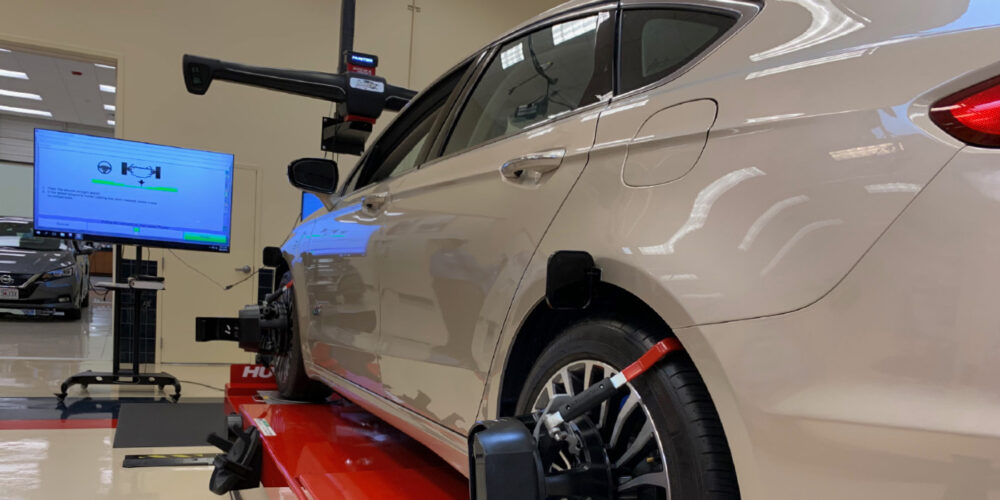Detroit – With the launch of new federal vehicle fuel economy rules only about one week away, the American auto industry has grown by nearly a quarter million jobs (236,600) since June 2009 when the auto industry hit bottom, according to a new report available from DrivingGrowth.org.
The report from DrivingGrowth.org finds that fuel efficiency is a major factor behind the gains in U.S. auto jobs. A website that tracks the revitalization of the U.S. auto industry, DrivingGrowth.org is sponsored by the Natural Resources Defense Council, the National Wildlife Federation, and the Michigan League of Conservation Voters Education Fund.
Manufacturing of motor vehicle and parts has grown by 165,100, or 26.4% since June 2009. Another 71,500 jobs have been added at U.S. auto dealerships. Automakers, their suppliers and their dealers are now looking ahead to a brighter future after the dark days of the recession.
Examples of how fuel-efficiency standards are accelerating the auto industry’s recovery in the U.S. include the following:
* Michigan — 35,200 new auto manufacturing jobs since June 2009 when the auto industry hit bottom, accounting for half of the state’s total job gains over the same period. In Saginaw, Michigan, for example, automotive supplier has added 650 jobs and will retain an additional 1,000 jobs for production of electric power steering components (EPS) for U.S.-made pickup trucks. EPS, which replaces a more fuel intensive hydraulic system, can boost fuel economy by 4-6percent on a typical vehicle.
* Indiana — 19,800 new auto manufacturing jobs since June 2009 when the auto industry hit bottom, accounting for over one third of the state’s total job gains over the same period. In Greensburg, Indiana, Honda is investing $40 million and will hire 300 new workers as its Indiana facility becomes the sole global producer of the fuel-efficient Honda Civic hybrid. It will be exported to markets around the world from Indiana.
* Ohio — 11,300 new auto jobs since June 2009 when the auto industry hit bottom, accounting for one quarter of the state’s total job gains over the same period. In Warren, Ohio, General Motors is running three shifts at its Lordstown Assembly plant, adding 1,200 jobs and employing 4,200 total workers to produce the high-mileage Chevy Cruze, which achieves 42 miles per gallon (MPG) in the EcoCruze model.
“Setting strong fuel efficiency standards means we are sending more of our energy dollars to the Midwest, not the Middle East” said Tiffany Ingram, Midwest advocacy director for NRDC. “Global automakers are now sourcing their most advanced, high-tech manufacturing here in the United States, creating a more sustainable and secure future for U.S. industry and U.S. workers.”
Part of the brighter U.S. industry future is due to manufacturers investing in innovative technologies to prepare their vehicle fleets for increased fuel efficiency standards. Model year 2012 is the first year of a long-term federal program that requires a sales-weighted average of the equivalent of 35.5 MPG by 2016.
In 2011, the Obama administration announced plans for additional draft fuel economy and emissions standards that will raise new passenger vehicle fuel efficiency levels to the equivalent of 54.5 MPG by model year 2025. The process of setting new fuel economy standards began in 2007, when Congress passed and President George W. Bush signed a new energy law.
The new rules, expected to become final later this month, cover both fuel economy and emissions and are a continuation of the carbon pollution and fuel-efficiency standard program that currently goes to 35.5 MPG by 2016. Thirteen global automakers, including Ford, GM and Chrysler, as well as the United Auto Workers (UAW) are on record in support of the new rules.
According to the new DrivingGrowth.org report, current trends show that higher fuel efficiency standards are already working:
* The first half of 2012 set the record for the highest-ever fuel efficiency for new passenger vehicles at 23.8 MPG, up 1.1 MPG from the same period from 2011.
* The projected new auto sales figure for 2012 is 14.1 million units, up a strong 1.4 million vehicles over 2011.
* There are now significantly more fuel-efficient vehicle choices of all sizes for consumers. The number of high fuel efficiency, high volume vehicle models has more than doubled since 2009, from 28 to 60, according to an analysis by auto industry forecasters Baum and Associates. These include fuel-efficient models of small cars, midsize cars, and crossovers (CUVs).
DrivingGrowth.org currently features video interviews with engineers and product executives from BorgWarner’s Powertrain Technical Center in Auburn Hills, Michigan, which is also home to the company’s global headquarters. At the Technical Center, BorgWarner develops turbochargers, dual clutch transmissions, variable valve timing and other fuel-saving and emission reduction technologies. The company has added more than 6,000 jobs worldwide in the past two years.











